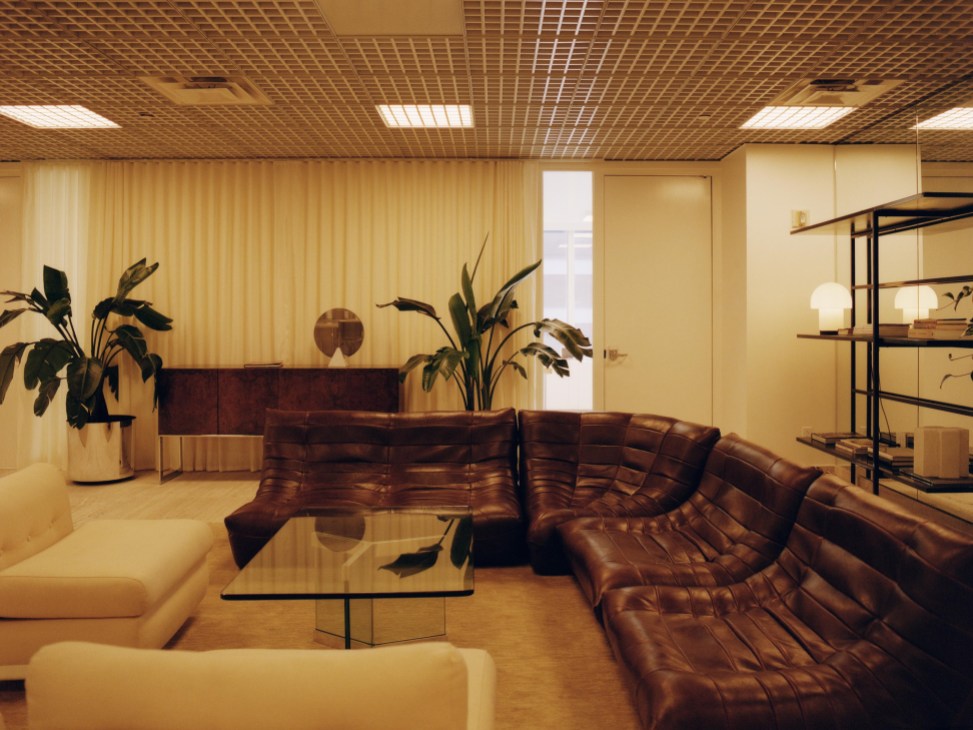Return-to-office mandates won’t keep workers in their cubicles – but a lavish workspace can
Hoping to lure remote workers back to the office, businesses in the US’s financial capital are giving their HQs an upgrade.
At first glance, 100 Pearl Street seems like a case study of the crisis facing downtown New York. Entire floors of this 1980s brick tower in Manhattan’s Financial District are empty – a problem that many of the building’s neighbours also face. A quarter of the office space around Wall Street is vacant after an industry-wide exodus to the home office.
Yet on 100 Pearl Street’s 28th floor, the lift doors slide open to reveal part of the pristine headquarters of asset management firm Alger, a hushed, double-height space with soaring windows and Jean Prouvé-designed lobby chairs. Inside, sharply dressed analysts dart between their desks and sparkly new boardrooms. “It’s a mark of success for any business to get to build your headquarters from scratch,” says Daniel C Chung, Alger’s CEO, sitting in a lounge chair in his corner office. “Our decision to invest was the result of a combination of terrific space, the views and a good deal.”
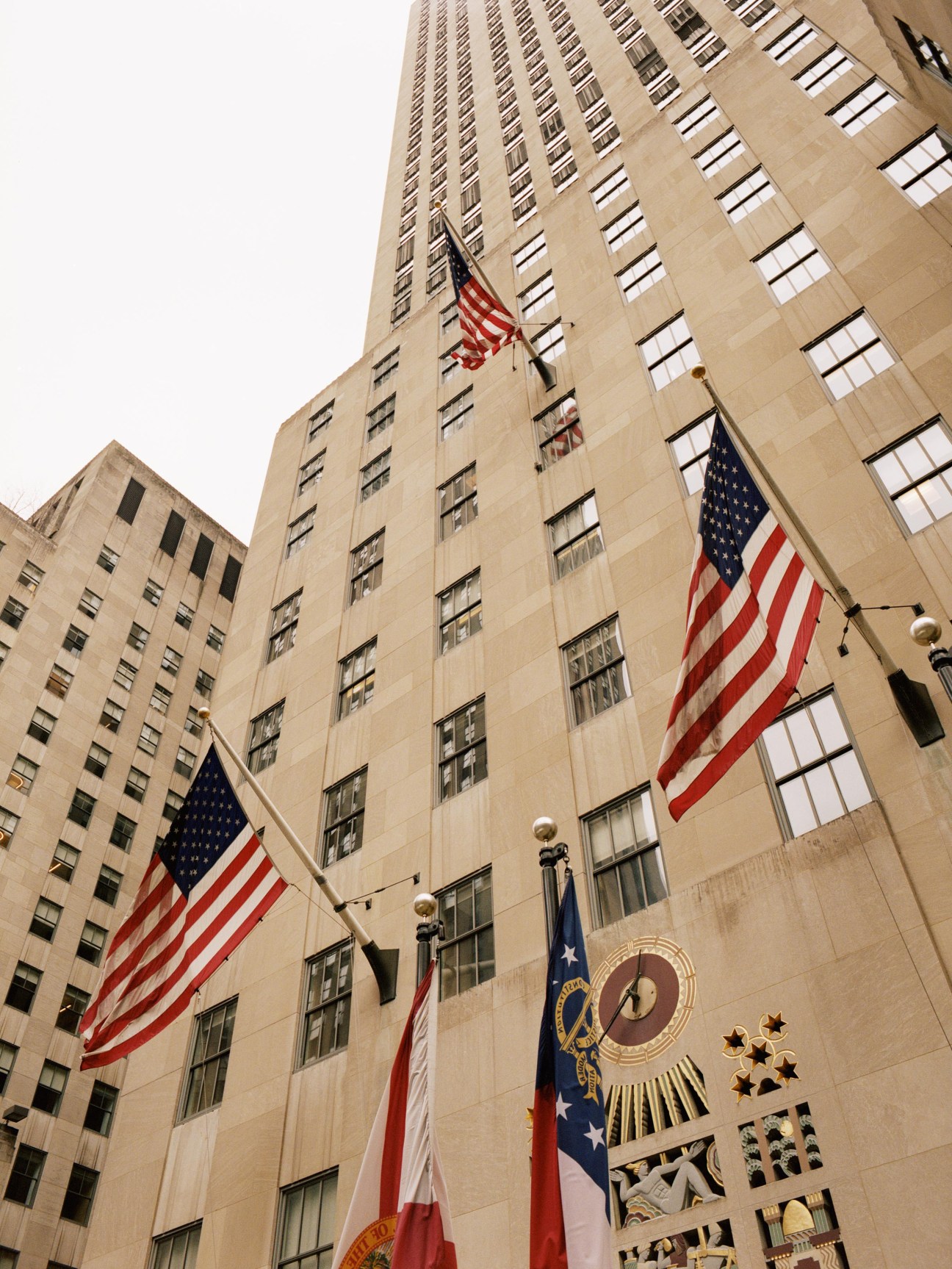

Amid a glut of unwanted commercial real estate in New York, some companies are taking advantage of reduced rents to secure bigger and better headquarters. Alger, which has a relatively modest $28bn (€23.7bn) in assets under management, signed up for its new office in 2020 and moved in two years ago. Its three floors – of which the upper two are newly built – feature felt-lined conference rooms and custom-made wooden workstations for a staff of 170 stock traders, wealth managers and analysts. The team was previously based in a cramped, open-plan office in Midtown.
There’s a heated competition emerging at the upper echelons of Manhattan’s commercial property market. To lure staff back to the office, canny firms are spending lavishly on amenities, furnishings and location, all in a bid to outdo each other in terms of digs. Alger’s trophy HQ is just one example of many.
Rising above skyscrapers built by Gilded Age industrial tycoons, the latest addition to New York’s silhouette is a 423-metre-tall bronze skyscraper that will house the new headquarters of multinational finance corporation JPMorgan Chase. Designed by UK-based practice Foster 1 Partners, it is expected to be completed later this year. Any old class-B office space simply won’t do and the battleground includes everything from in-house gyms and on-site doctors to plunge pools and the size of the fish tank on the executive floor.
But it’s not all about the frills. The property race among New York’s high-flying firms is about projecting an aspirational, even somewhat cinematic image after years of dour pronouncements about the death of the workplace. “The office has turned from a mere nine-to-five place into a cultural destination,” says Jonathan Olivares, the design director at Knoll, a firm that has furnished corporate America since the 1950s.
This new crop of trophy offices often evokes some of the glamour of Madison Avenue’s mid-century heyday (and there’s more than a nod to the sets of 1960s-set TV drama Mad Men in one or two corner suites that Monocle visits). For many workers, it’s no longer necessary to be physically present to complete their tasks, so bosses are realising the importance of creating spaces that both look the part and make staff feel part of something exciting.
“I couldn’t really justify [Alger’s investment in its HQ] beyond the fact that it’s inspirational to employees,” says Chung. “The dream of coming to New York is associated with the city’s glamour, its nightlife and the idea of successfully making a career in one of the world’s most competitive markets.” He gestures around the C-suite, with its views of Manhattan and Brooklyn. “I tried to make our office a place where a young person might come in and say, ‘I want to be here.’”
Before the lease was signed, Chung had already chosen the interior designers for Alger’s new base: Brittney Hart and Justin Capuco, the founders of New York-based studio Husband Wife, best known for elegant residences. The pair spent three years on the $15m (€13.2m) project, tailoring their work to the wishes of Alger employees. “We booked a conference room for a day and spoke to every senior member of staff and most junior ones,” says Capuco. “It was clear that nobody wanted their workplace to feel like an old-fashioned cubicle farm.”
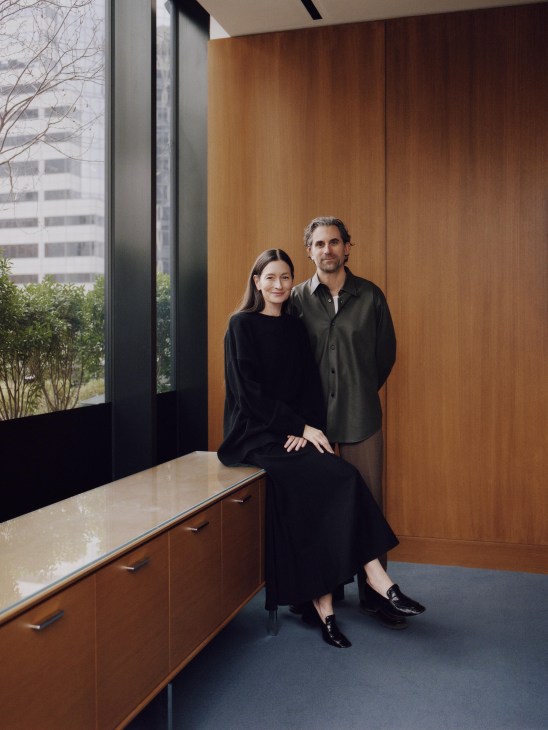

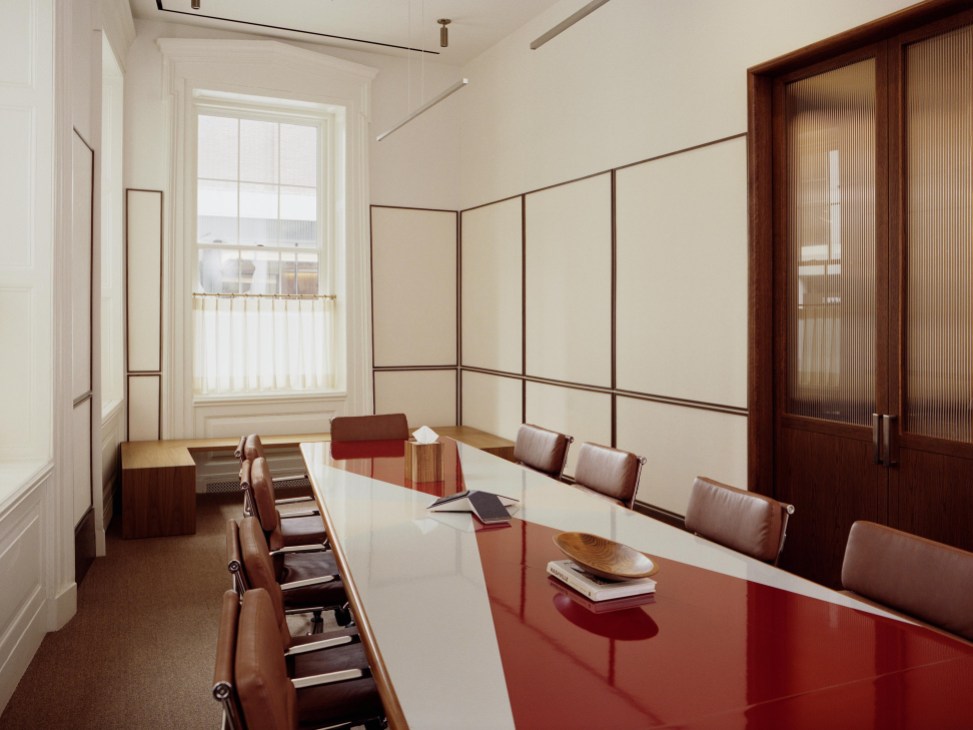
For the layout, Hart and Capuco drew inspiration from the glass-pavilion homes of early Californian modernism, creating “floating” offices with metal blinds for privacy. The meeting rooms come in hues of blue – Alger’s company colour – with carpeting and felt walls, scalloped ceilings, curving eucalyptus-wood desks and presentation screens inspired by science-fiction films. In the open-plan workspaces, where some type of cubicle was unavoidable, they designed roomy nooks crafted from stained oak, with fabric panelling for optimal acoustics. Seating, all in black leather, comes courtesy of mid-century power-office designers Marcel Breuer, the Eameses and Mies van der Rohe.
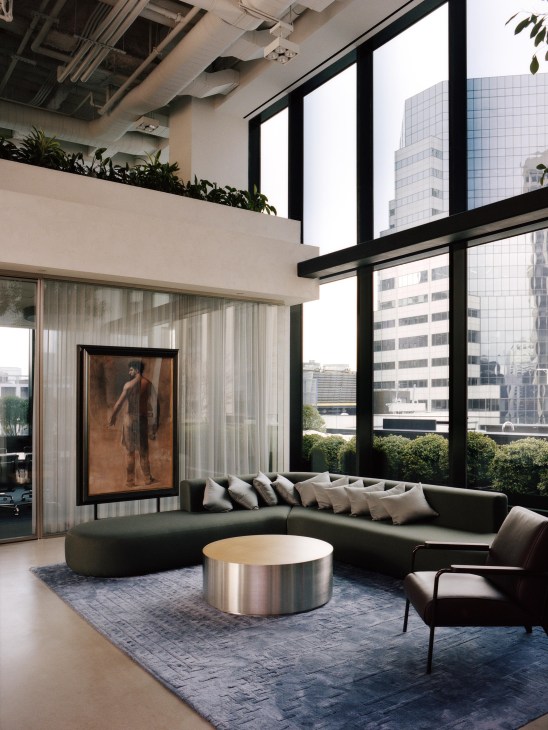
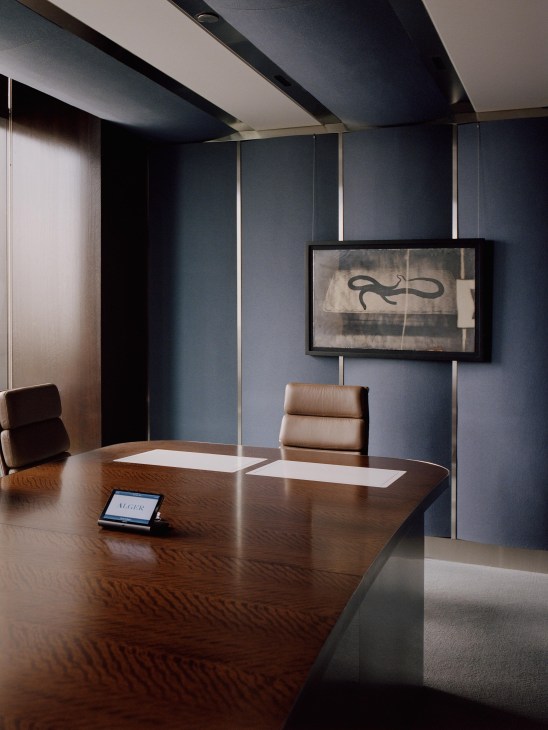
“We are seeing a complete market split,” says Volker Zinkl, the head of real estate for the US subsidiary of German reinsurer Munich RE. “The top offices are all going, while downtown is 40 per cent empty.” Zinkl shows Monocle around one of the firm’s flagship assets: an Eli Kahn-designed office tower on Madison Avenue. Since buying the building in 2020, the new landlords have been busy upgrading its amenities and adding spaces for a café and a bar.
“We see ourselves almost as hotel directors,” says Zinkl. “Our tenants are fighting to attract top employees, retain talent and impress their clients.” He points to the bouquets of cherry blossoms on the receptionist’s desk. “Take these flowers. We spend $3,000 [€2,560] every month on them. When you have thousands of people passing by every day, you might as well make it count.”
The seating that Zinkl bought for the lobby – a pair of beige curving couches on aluminium legs – is something of a secret handshake in the world of top-flight office interiors. Last year, Italian furniture company Unifor began producing the Andromeda collection, which also includes a credenza and tables with a mirror-like polish; its designer, LSM, has become a go-to architect among the new crop of trophy offices in Manhattan.
“We always ask our clients, ‘What do you want and what are your business goals?’” says Debra Lehman Smith, LSM’s founding partner. In the case of a financial firm on Park Avenue – one of the firm’s recent projects – the answers to those questions were translated into pleated marble walls and a full suite of Andromeda furniture. LSM has also kitted out a double-height atrium inside Mies van der Rohe’s Seagram building for private equity firm Centerbridge Partners.
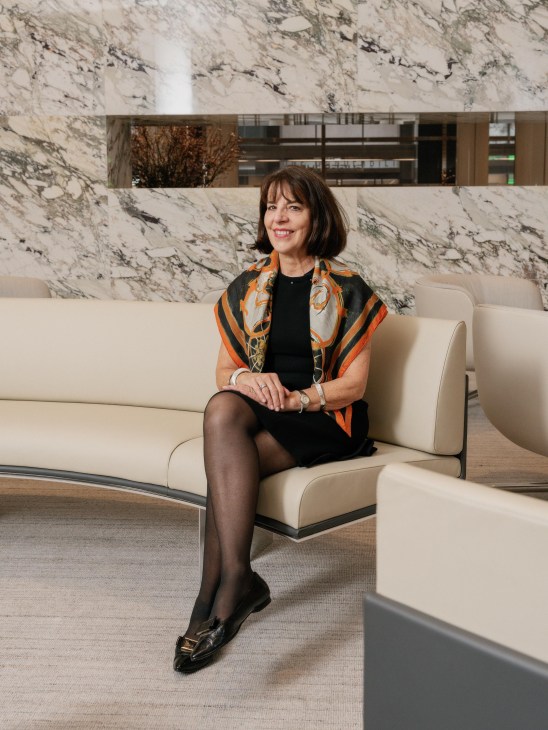
As Monocle meanders from office to office in neighbourhoods from Wall Street to Midtown Manhattan, the Dow Jones stock index is taking a similarly zigzagging route. Donald Trump’s various pronouncements are shaking up the economy; bankers and traders have found themselves at the centre of it all. We accompany Lehman Smith for a brisk stroll up Fifth Avenue towards the skyscraper at Rockefeller Center, an art deco marvel with a lobby covered in green Tinos marble. In 2018, when the Rockefeller family office launched an expansion to become a full-fledged financial firm, it turned to LSM to help define its physical footprint. The team toured the available spaces in the company’s namesake tower and settled for a high-ceilinged space with a terrace overlooking St Patrick’s Cathedral. “No matter how great you are, if you’re in a low, dark space, it’s never going to work,” says Lehman Smith. The result is an open-plan office with stripped-back columns revealing the tower’s original iron structure. It has served as inspiration for some younger firms seeking to evoke previous eras of corporate power with their HQs.

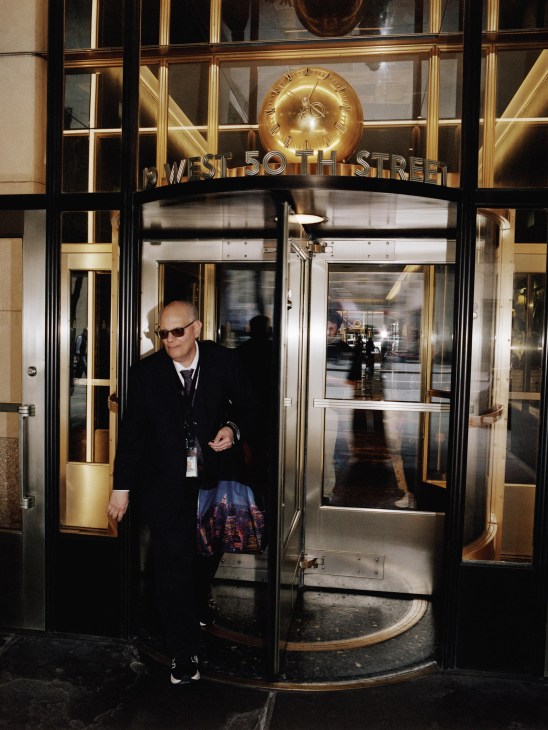
“We organise our client cocktails, art exhibitions and town halls here,” says Michael Gaab, Rockefeller Capital Management’s chief administrative officer. “This space represents our company’s heritage.”
Not every firm enjoys an address that’s as iconic as the Rockefellers’ but the centre of gravity in New York is shifting. Many companies have decamped to the lofty steel-and-glass heights of Hudson Yards, a development on Manhattan’s western waterfront that stood desolate for years after opening in 2019 but where rents now begin at $1,400 (€1,190) per square metre – for comparison, a grade-A office in the City of London will set you back less than $1,080 (€920) per square metre. In Midtown, those buildings that are fully leased out tend to be architecturally significant skyscrapers, such as the Seagram, even if tenants pay rents starting at $1,615 (€1,380) per square metre, compared to the area’s average of $900 (€770) per square metre.
In 2020, Alger’s decision to relocate downtown to the old heart of US finance seemed like an edgy decision, given that the area was emptying out. “We’re a little contrarian,” says Chung. Outside the office is Harry’s, a legendary Wall Street watering hole, which used to be packed by 16.30 in the old days with a hard-drinking crowd of investment bankers, stock brokers and portfolio managers. “Then they would all rush to their commuter trains and, by 18.30, this area would be a ghost town,” says Chung. After a long lull following the pandemic, however, the Financial District has become a place to linger after dark. Quite a few places to shop and dine have launched in the past year, including The Observatory, a private dining lounge on the top floor of an art deco apartment building, and department store Printemps, which opened in March on One Wall Street.
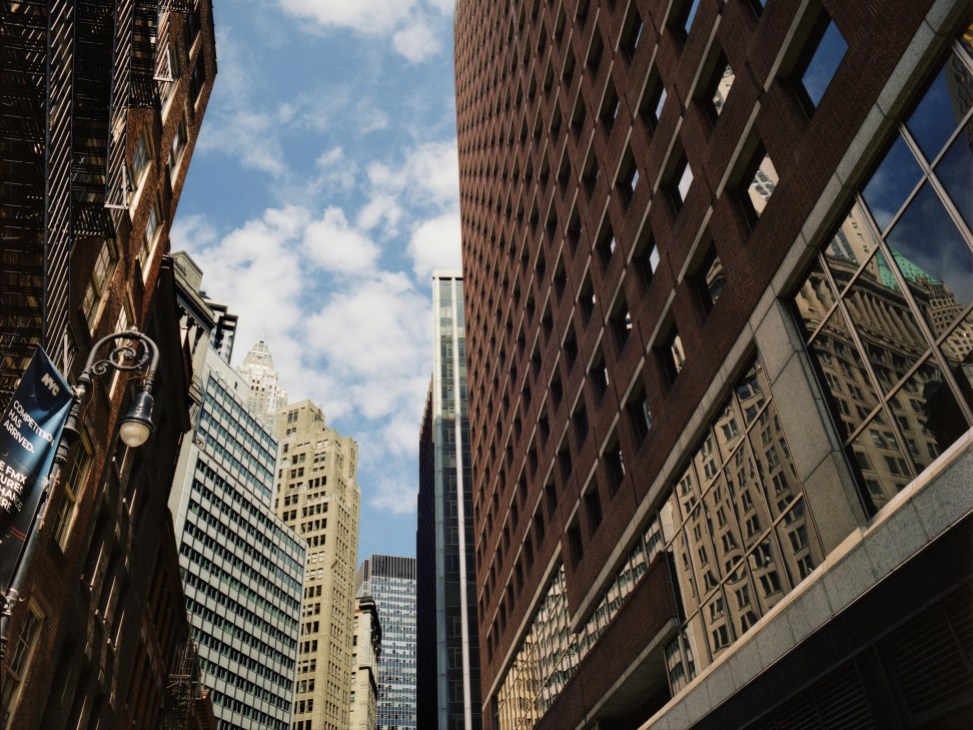
These green shoots suggest a surprising revival for New York’s traditional office heartland, even as so much floor space remains empty. It is attracting a new breed of workplace: at 161 Water Street, the vacant former HQ of insurer aig has been transformed into Water Street Associates, or WSA, a new hub courting creative businesses. The drab 1980s tower has been reimagined with travertine floors, cognac-coloured carpeting and faux cubicles assembled from usm shelving, as well as liberal pickings from the catalogue of vintage furniture reseller 1stDibs. WSA has a concierge and butler service; there’s a floor with a barber and an acupuncturist. The tenants include the old guard of law firms and financial start-ups, alongside a crop of designers, stylists and upstart media companies. WSA has expanded to nearby 180 Maiden Lane.
“There’s no reason to only offer young people Wework nightmares,” says WSA’s Sam Wessner. “If you actually make it nice, people will still want to work in offices.”
